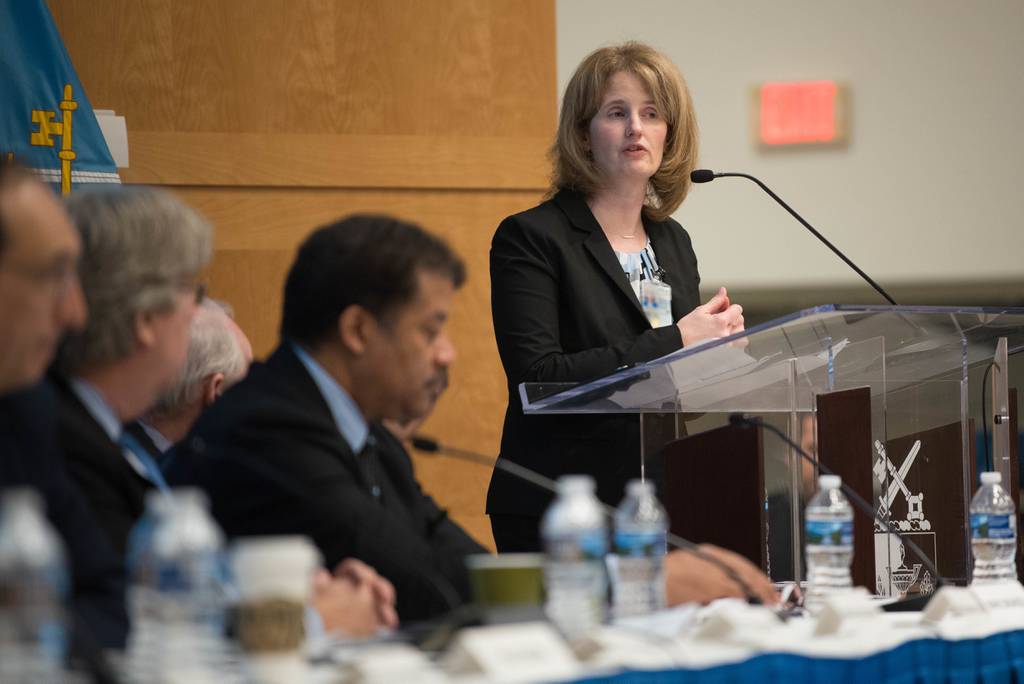The military wants to demonstrate innovative prototypes that use commercial 5G technologies as a way to augment future military capabilities.
Select companies will test 5G technology at four U.S. military bases in 2020 as part of an ongoing effort. Department of Defense leaders expect to release new testing opportunities each quarter.
“History is replete with examples of the DoD partnering with the private sector to foster innovation and collaboratively bring leap-ahead technology to the forefront,” said Lisa Porter, deputy under secretary of defense for research and engineering during remarks at Mobile World Congress 19 in Los Angeles. "The DoD wants our American industry to lead in 5G. A strong American economy is vital to our national security.”
Department leaders announced Oct. 23 they would issue a draft request for proposals for 5G testing at some U.S. military bases in November ahead of a full solicitation in December. However, that schedule is dependent on passage of a 2020 defense appropriations bill.
Department leaders also expect to hold an industry day prior to the release of the full request.
The DoD has announced the focus areas for its first round of experiments, which are:
- Establishing a dynamic spectrum sharing testbed to demonstrate the capability to use 5G in congested environments with high-power, mid-band radars.
- Integrating augmented reality and virtual reality into mission planning and training in both virtual and live environments on training ranges.
- Smart warehouses to leverage 5G’s ability to enhance logistics operations and maximize throughput.
“We’re going to do large scale testing and experimentation of the three different use cases,” Porter said. “The use cases that we’re looking at have obvious military and commercial relevance.
“We as the United States … have a real challenge with spectrum, especially in mid-band,” she added. “We have to acknowledge that together we have to work that out. Industry needs access to spectrum. DoD needs access to spectrum. We both acknowledge each others’ challenges. So essentially it’s a call to action, to say, ‘Alright, let’s get serious about figuring out how to do this together.’”
Joshua Weaver, associate director of the DoD’s 5G working group, offered additional context Nov. 5 at the DC5G conference, explaining that contracts would be distributed via an other transaction authority through the National Spectrum Consortium. That flexible contracting method would allow more rapid innovation in developing 5G technologies, said Weaver.
“We have also been working with the private sector since the beginning of this. We do a lot of work … for 5G through the National Spectrum Consortium, and earlier this year we had a request for technical concepts that we released, where we solicited the consortium members … to submit ideas that were anonymized and then reviewed … to peel out the most impactful ideas,” said Weaver. “We’re really trying to look at the approaches to 5G infrastructure rollout from a multi-agency perspective” where agencies can collaborate on the development and testing of 5G capabilities.
On Oct. 31, the DoD released which bases would be used for testing: Joint Base Lewis-McChord, Washington; Hill Air Force Base, Utah; Naval Base San Diego, California; and Marine Corps Logistics Base Albany, Georgia.
Those bases were chosen “for their ability to provide streamlined access to site spectrum bands, mature fiber and wireless infrastructure, access to key facilities, support for new or improved infrastructure requirements, and the ability to conduct controlled experimentation with dynamic spectrum sharing,” according to the DoD press release.
According to Weaver, the smart warehouse concept will be tested at Naval Base San Diego and Marine Corps Logistics Base Albany. Spectrum experimentation will take place at Hill Air Force Base and augmented reality/virtual reality testing will take place at Joint Base Lewis-McChord.
Nathan Strout covers space, unmanned and intelligence systems for C4ISRNET.








